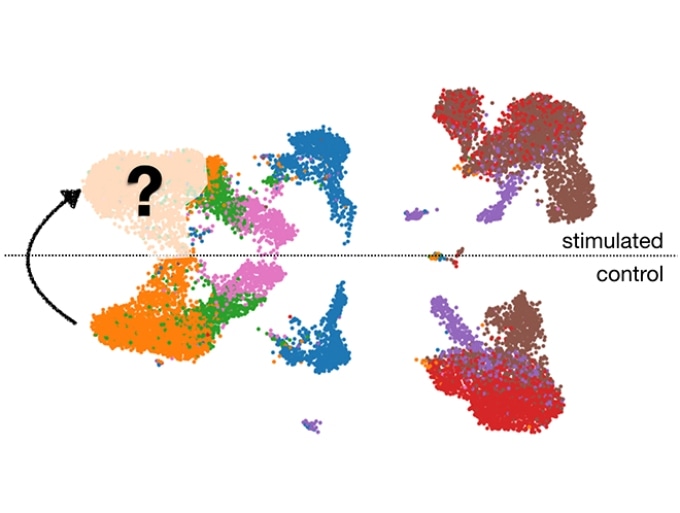Jul 30 2019
A research team at Helmholtz Zentrum München has created a novel tool that could revolutionize the way disease and disease treatments are studied on a cellular level.
 Predicting cellular behavior in silico: Trained on data that capture stimulation effects for a set of cell types, scGen can be used to model cellular responses in a new cell type. (Image credit: Helmholtz Zentrum München)
Predicting cellular behavior in silico: Trained on data that capture stimulation effects for a set of cell types, scGen can be used to model cellular responses in a new cell type. (Image credit: Helmholtz Zentrum München)
The researchers, including Alex Wolf, Mohammad Lotfollahi, and Fabian Theis from the Institute of Computational Biology, created an artificial intelligence (AI)-powered tool, called scGen, for estimating the behavior of a cell in silico.
The scGen tool can help in mapping and analyzing cellular response to disease and disease treatments, apart from the experimentally available information. The study results have been reported in Nature Methods.
Within the Human Cell Atlas, large-scale atlases of organs in a healthy state will soon become available. This represents a major step in better interpreting organs, tissues, and cells in healthy state and also serves as a reference when diagnosing, tracking, and treating various diseases.
Conversely, owing to the huge number of potential combinations of disease conditions and treatments, it is both costly and labor-intensive to expand these data to define disease and disease treatment in conventional life science labs. As a result, such data are not scalable.
The main objective of computational biology is to precisely model the cellular response to perturbations (for example, compounds, disease, compounds, and genetic interventions). While models predicated on mechanistic and statistical methods are available, machine-learning-based solution, feasible for high-dimensional, unobserved phenomena, is yet to become available.
Moreover, scGen is the pioneering tool that estimates cellular response out-of-sample. In other words, if scGen is trained on data that capture the impact of perturbations for a specified system, it would be able to make consistent predictions for a varied system.
For the first time, we have the opportunity to use data generated in one model system such as mouse and use the data to predict disease or therapy response in human patients.
Mohammad Lotfollahi, PhD Student, Helmholtz Zentrum München and Technische Universität München
As a generative deep learning model, scGen exploits concepts from language, sequence, and image processing and, for the first time, uses these concepts to model a cell’s behavior in silico.
Enhancing the scGen tool to a fully data-driven formulation is the next step for the researchers. This approach can help in increasing the tool’s predictive power to facilitate the analysis of combinations of perturbations.
“We can now start optimizing scGen to answer more and more complex questions about diseases,” stated Alex Wolf, Team Leader, and Fabian Theis, Director of the Institute of Computational Biology and Chair of Mathematical Modeling of Biological Systems at Technische Universität München.